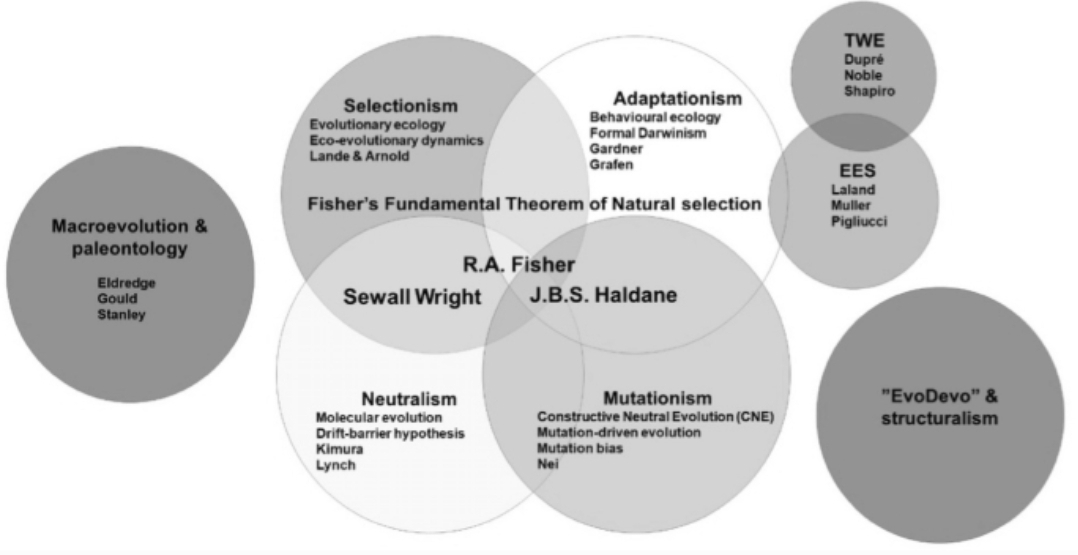How the Extended Evolutionary Synthesis allows God
The Extended Evolutionary Synthesis (EES) is a developing field in evolutionary biology that challenges and expands upon the traditional neo-Darwinian understanding of evolution. While it doesn't directly prove the existence of God, the EES raises several intriguing points that resonate with theistic perspectives and open up new avenues for dialogue between science and religion.
Key Principles of the EES
The EES emphasizes the role of constructive development, where organisms actively shape their own evolutionary trajectories. This contrasts with the traditional focus on random genetic variation and natural selection. The EES highlights the following key principles:
Developmental Bias: Organisms have inherent tendencies to develop in certain ways, influencing the range of possible variations upon which natural selection can act.
Phenotypic Plasticity: Organisms can modify their traits in response to environmental cues, leading to adaptive changes that can be inherited by future generations.
Niche Construction: Organisms actively modify their environments, creating new selection pressures that can drive evolutionary change.
Inclusive Inheritance: Inheritance extends beyond genes to include epigenetic factors, learned behaviors, and cultural practices.
Theistic Implications of the EES
The EES challenges the reductionist view of evolution as a purely random and mechanistic process. It suggests a more holistic and teleological perspective, where organisms play an active role in their own evolution and the evolution of their environments. This resonates with theistic notions of purpose and design in the natural world.
1. Purpose and Directionality
The EES suggests that evolution is not entirely random but guided by inherent tendencies and developmental constraints. This implies a degree of directionality and purposefulness in the evolutionary process, which aligns with theistic views of a divinely ordained plan.
2. Creative Potential
The EES highlights the remarkable capacity of organisms to adapt and innovate. This creative potential resonates with the theological concept of a Creator endowing creation with the ability to evolve and flourish.
3. Interconnectedness and Cooperation
The EES emphasizes the interconnectedness of organisms and their environments. Niche construction and inclusive inheritance demonstrate how organisms cooperate and shape their shared world. This resonates with theistic views of creation as a harmonious and interconnected whole.
4. Emergence of Complexity
The EES provides insights into the emergence of complex systems through self-organization and emergent properties. This resonates with theistic notions of a divine intelligence underlying the intricate complexity of the natural world.
5. Human Uniqueness
The EES acknowledges the unique role of human culture and consciousness in shaping our evolutionary trajectory. This aligns with theistic views of humans as created in the image of God, endowed with unique capacities for reason, creativity, and moral responsibility.
Bridging Science and Religion
The EES offers a framework for bridging the gap between science and religion. It challenges the perception of evolution as a threat to religious beliefs and opens up new possibilities for understanding the relationship between God and creation.
1. Complementarity
The EES suggests that science and religion can offer complementary perspectives on the natural world. Science can explore the mechanisms of evolution, while religion can provide meaning and purpose to the evolutionary process.
2. Ongoing Creation
The EES suggests that creation is an ongoing process, with organisms actively participating in their own evolution. This resonates with theistic views of God's continuous involvement in the world.
Conclusion
The Extended Evolutionary Synthesis offers a fresh perspective on evolution that challenges traditional assumptions and opens up new avenues for dialogue between science and religion. While it doesn't directly prove the existence of God, the EES raises several intriguing points that resonate with theistic perspectives. It suggests a more holistic and teleological view of evolution, where organisms play an active role in their own development and the development of their environments. The EES highlights the creative potential of organisms, the interconnectedness of life, and the emergence of complexity. It also acknowledges the unique role of human culture and consciousness in shaping our evolutionary trajectory.
The EES provides a framework for bridging the gap between science and religion. It suggests that science and religion can offer complementary perspectives on the natural world. The EES is compatible with the belief in ongoing creation.
In conclusion, the Extended Evolutionary Synthesis offers a valuable contribution to our understanding of evolution and its implications for our understanding of God and creation. It invites us to embrace a more holistic and awe-inspiring view of the natural world, one that recognizes the intricate interplay of chance and necessity, creativity and constraint, and the ongoing unfolding of the divine plan.




Comments
Post a Comment